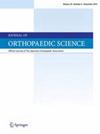Perioperative glycemic control reduces the risk of retear in diabetic patients following arthroscopic rotator cuff repair: A meta-analysis
IF 1.5
4区 医学
Q3 ORTHOPEDICS
引用次数: 0
Abstract
Background
Previous studies have associated diabetes with reduced shoulder motion, increased pain, and higher postoperative retear risk after arthroscopic rotator cuff repair (ARCR). However, the impact of glycemic control, measured by hemoglobin A1c (HbA1c) levels, on retear and revision rates after ARCR in diabetic patients remains unclear.
Methods
This systematic review was conducted using the PubMed, Cochrane Library, Web of Science, and Embase databases according to the preferred reporting conventions for systematic reviews and meta-analyses. Only studies that compared retears and revisions in ARCR patients with documented HbA1c levels between controlled and uncontrolled diabetes groups were included. Relevant data were extracted and analyzed using STATA software. The methodological index for nonrandomized studies was employed to assess the risk of bias in the selected studies. Additionally, heterogeneity tests and sensitivity analyses were conducted to evaluate potential heterogeneity within the samples, and publication bias was also detected.
Results
Six studies (4395 patients), including five retrospective cohort studies and one case‒control study, were included. Four of these studies assessed retears involving 253 patients. Lower HbA1c levels, indicating better glycemic control, were significantly associated with reduced retear rates after ARCR in diabetic patients (P = 0.000; odds ratio = 0.242, 95 % confidence interval: 0.128–0.454; I2 = 25 %). For revision evaluations, two studies, with a total of 4142 patients, found no significant difference in rates between controlled and uncontrolled diabetes groups, and no publication bias was detected.
Conclusion
Following ARCR in diabetic patients, effective glycemic control significantly reduces retear rates without affecting revisions, and maintaining glycemic control in the postoperative period may contribute to rotator cuff healing.
围手术期血糖控制可降低关节镜下肩袖修复术后糖尿病患者再次撕裂的风险:荟萃分析。
背景:以往的研究表明,糖尿病与肩关节活动减少、疼痛加剧以及关节镜下肩袖修复术(ARCR)术后再撕裂风险升高有关。然而,以血红蛋白 A1c(HbA1c)水平衡量的血糖控制对糖尿病患者 ARCR 术后再撕裂和翻修率的影响仍不清楚:本系统综述根据系统综述和荟萃分析的首选报告惯例,使用 PubMed、Cochrane Library、Web of Science 和 Embase 数据库进行。只纳入了对有 HbA1c 水平记录的 ARCR 患者的重剪和修剪进行比较的研究。使用 STATA 软件提取和分析相关数据。采用非随机研究的方法学指数来评估所选研究的偏倚风险。此外,还进行了异质性检验和敏感性分析,以评估样本内部潜在的异质性,并检测了发表偏倚:结果:共纳入六项研究(4395 名患者),包括五项回顾性队列研究和一项病例对照研究。其中四项研究对涉及 253 名患者的再障进行了评估。较低的 HbA1c 水平(表明血糖控制较好)与糖尿病患者 ARCR 后的再撕裂率降低显著相关(P = 0.000;几率比 = 0.242,95% 置信区间:0.128-0.454;I2 = 25%)。在翻修评估方面,有两项研究(共4142名患者)发现,糖尿病病情得到控制和未得到控制的两组患者的翻修率没有显著差异,也没有发现发表偏倚:糖尿病患者进行 ARCR 后,有效控制血糖可显著降低再撕裂率,且不影响翻修,术后保持血糖控制可能有助于肩袖愈合。
本文章由计算机程序翻译,如有差异,请以英文原文为准。
求助全文
约1分钟内获得全文
求助全文
来源期刊

Journal of Orthopaedic Science
医学-整形外科
CiteScore
3.00
自引率
0.00%
发文量
290
审稿时长
90 days
期刊介绍:
The Journal of Orthopaedic Science is the official peer-reviewed journal of the Japanese Orthopaedic Association. The journal publishes the latest researches and topical debates in all fields of clinical and experimental orthopaedics, including musculoskeletal medicine, sports medicine, locomotive syndrome, trauma, paediatrics, oncology and biomaterials, as well as basic researches.
 求助内容:
求助内容: 应助结果提醒方式:
应助结果提醒方式:


